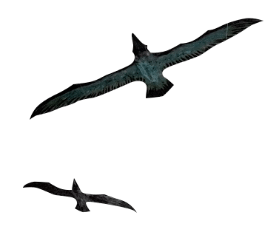From the 13-century onward, Nordic labyrinths were seen in multitudes across Scandinavia. The design of the Nordic labyrinth mirrors other countries in Europe, but the “Baltic” variety with double spirals from the center outward relate to traditional Nordic folk customs. Not all labyrinths are alike, however. Let’s take a look at different types of labyrinths in the Nordic region:
Stone Labyrinths
Stone labyrinths, or “Trojaborgs”, have stood the test of time for hundreds if not thousands of years, many of which have been found in recent history.
Trojaborgs were formed with small-to-large rocks of the area. They’re often found near shorelines of fishing settlements, as fishermen would walk the labyrinths before going to sea. This practice was thought to ensure favorable winds, bountiful catches, and befuddle the smägubbar (meddling trolls) from bothering you on your trip.
Another use for stone labyrinths were rituals involving virgins. In both Finland and Sweden during the spring, a young virgin maiden stood in the middle of the labyrinth, while young men seek to win her hand by reaching the center of the labyrinth first. This was known as the "Jungfrudans" (virgin dance) game.
Church Labyrinths
In some Nordic churches, the labyrinth motif was found among mediaeval paintings on walls and ceilings. Some were fresco paintings, painted directly on the walls, and showcased as a main adornment of the church. Others were hidden in plain sight, often to the side of doorways. These suggest they were used for more protective purposes. Lastly, some labyrinths were graffiti. These were found on the ground of church towers. Historians suggest these were not accepted as part of the original church adornment and were made in secret.
Many of the church’s labyrinth paintings were along side other symbolic imagery, some of which include: mermaids, dogs, ships, demons or soldiers.
Labyrinths Today
Labyrinths are still used as a common spiritual practice today. Used as a walking meditation, the simple maze is a place for building a stronger sense of connection to community and oneself.
Come take a meditative walk on our Nordic Labyrinth located on The Fisherman's Sun Terrace!
National Nordic Museum's Labyrinth
Designed by internationally acclaimed artist Gordon Huether, the National Nordic Museum’s labyrinth is based upon the traditional 7-ring Cretan labyrinth, a common pattern of Nordic labyrinths with links to Viking Age sites in Ireland. The finished labyrinth was installed in early August 2021.


